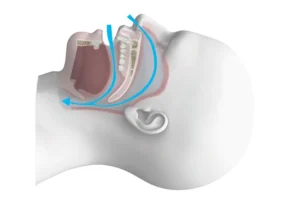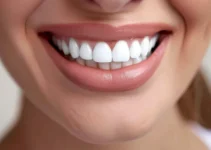Waking up feeling like you are choking can be a terrifying experience, commonly termed as ‘choking in sleep.’ This phenomenon might be linked to several health conditions, such as sleep apnea, gastroesophageal reflux disease (GERD), or even more severe ailments like obstructive sleep apnea (OSA). Understanding the underlying causes is crucial for treating this symptom. Simple adjustments like altering your sleeping position or using a proper pillow can greatly help, but it’s important to consult a healthcare provider to determine the exact cause and appropriate treatment options.
Common Causes of Choking in Sleep
Experiencing choking during sleep can be a frightening and dangerous occurrence. One of the primary causes is obstructive sleep apnea (OSA), a disorder where the muscles of the throat collapse intermittently, leading to blocked airways. This can result in a person waking up abruptly gasping for air. Various factors can predispose individuals to OSA, including obesity, aging, and genetic predisposition. Obesity, in particular, contributes significantly due to the accumulation of fat around the neck area, which increases the likelihood of airway collapse during sleep.
Another common cause of choking in sleep is gastroesophageal reflux disease (GERD). GERD occurs when stomach acid frequently flows back into the tube connecting your mouth and stomach (esophagus). This backwash (acid reflux) can irritate the lining of your esophagus and lead to nighttime symptoms like choking or coughing. Factors that can exacerbate GERD include eating large meals, lying down immediately after eating, and consuming certain foods and beverages such as spicy foods, alcohol, and caffeine. Managing GERD often involves dietary and lifestyle changes, and in some cases, medication to reduce stomach acid production. Other possible causes include allergic reactions or asthma, which can cause the airways to become inflamed or constrict, making breathing difficult. Some individuals may also experience choking due to neurological disorders that affect the coordination of respiratory muscles. Furthermore, sleeping positions can play a role; for instance, sleeping on the back may exacerbate the risk of airway obstruction. Identifying and addressing the underlying cause is crucial for effective management and to alleviate the frightening symptoms associated with choking during sleep.
For more in-depth exploration of these conditions and their treatments, consider reading additional articles that delve into the specifics of sleep disorders and respiratory health.
Symptoms and Diagnosis
Understanding the symptoms and obtaining an accurate diagnosis are crucial steps in addressing dental issues effectively. Dental problems can often go unnoticed until they reach an advanced stage, making early recognition and professional evaluation essential. In this section, we will delve into recognizing symptoms and the medical diagnosis process for dental concerns.
Recognizing Symptoms
Early detection of dental issues hinges on recognizing the initial symptoms. Common signs of dental problems include:
- Persistent bad breath or an unusual taste in the mouth
- Red, swollen, or bleeding gums
- Sensitivity to hot and cold foods or beverages
- Pain while chewing or biting
- Loose or shifting teeth
It’s essential for individuals to be mindful of these symptoms, as they can be early indicators of more severe conditions such as periodontal disease or dental infections. Regular dental check-ups are advised to catch these signs early and prevent further complications.
Moreover, ignoring these symptoms can lead to worsening conditions that might require more invasive treatments like root canals or tooth extractions. Early intervention not only saves time and money but also preserves the natural structure of the teeth.
Medical Diagnosis
Once symptoms are recognized, a professional medical diagnosis is necessary. The process often begins with a comprehensive dental examination where a dentist will review the patient’s medical history and conduct a physical examination of the mouth, teeth, gums, and jaw.
Diagnostic tools commonly used include:
- X-rays to visualize the internal structure of teeth and jawbone
- Periodontal probing to measure the depth of gum pockets
- Dental impressions to create accurate models of teeth
- Advanced imaging techniques like CT scans for detailed views
These diagnostic tools help in identifying issues such as bone loss, hidden infections, or structural abnormalities. With accurate diagnosis, a tailored treatment plan can be developed to address the specific needs of the patient.
Advanced diagnostic methods like genetic tests may also be employed to understand an individual’s susceptibility to certain dental conditions. This personalized approach enables more precise and effective treatment strategies.
Recognizing symptoms and obtaining a medical diagnosis are essential steps in maintaining oral health. Early detection and professional evaluation can prevent the progression of dental diseases and promote overall well-being.
For further insights into dental care and treatment options, explore our other articles on related topics.
Prevention and Treatment
Maintaining optimal oral health is crucial not only for aesthetic reasons but also for overall health. Prevention plays a significant role in reducing the need for complex dental treatments, while understanding the available treatment options can alleviate issues before they progress to more severe conditions. This section delves into lifestyle changes and medical treatments aimed at preventing and managing dental health problems effectively.
By incorporating preventative measures and being aware of the latest medical treatments, individuals can significantly mitigate the risks associated with poor dental health. Knowledge about these areas not only empowers individuals but also enhances their quality of life. Let’s explore the lifestyle changes and medical treatments that can aid in maintaining and improving dental health.
Lifestyle Changes
Lifestyle changes can profoundly impact oral health. Simple daily habits can prevent the onset of various dental diseases. Brushing teeth twice a day with fluoride toothpaste, flossing daily, and using an antibacterial mouthwash are fundamental practices. Additionally, limiting the intake of sugary foods and beverages can prevent tooth decay and other complications.
Dietary adjustments are also vital. Consuming a balanced diet rich in vitamins and minerals supports oral health. Foods high in calcium, such as dairy products, leafy greens, and almonds, strengthen teeth. Incorporating fruits and vegetables, which stimulate saliva production, helps wash away food particles and bacteria. Moreover, regular dental checkups are essential to identify and address issues early on.
Adopting these lifestyle changes can significantly reduce the risk of dental problems. It’s about integrating small, consistent habits into daily routines to promote long-term oral health. In addition, avoiding harmful habits like smoking and excessive alcohol consumption can further protect against oral diseases, such as gum disease and oral cancer.
Medical Treatments
In cases where lifestyle changes are not enough to prevent dental issues, medical treatments become necessary. Regular professional cleanings and examinations can help maintain oral health by removing plaque and tartar buildup that regular brushing cannot eliminate. Treatments like fluoride applications and dental sealants can provide additional protection against cavities, especially in children.
For more advanced dental problems, such as gum disease or tooth loss, more intensive treatments are available. Scaling and root planing are non-surgical procedures that can treat gum disease by cleaning the roots of teeth. In cases of severe decay or damage, dental implants offer a durable solution for tooth replacement, providing both aesthetic and functional benefits.
For issues related to bone loss, particularly in the context of dental implants, bone grafting procedures can regenerate lost bone tissue, providing a stable foundation for implants. Guided tissue regeneration and the use of growth factors have shown promising results in promoting bone and tissue regrowth, ensuring a better outcome for dental implant procedures. Understanding the range of medical treatments available allows individuals to make informed decisions about their dental care. It’s essential to consult with dental professionals to determine the most appropriate treatment options based on the specific needs and conditions. This proactive approach to dental health can prevent minor issues from becoming major problems.
For more comprehensive insights into maintaining optimal dental health and the latest advancements in dental treatments, check out our other articles. Stay informed and take charge of your dental wellness today!
Common Concerns about Choking in Sleep
Choking during sleep can be a frightening experience, prompting concerns about underlying health issues. Here we address some common questions to help you understand and manage this condition effectively.
What are the main causes of choking in sleep?
Choking in sleep can be caused by several conditions, including gastroesophageal reflux disease (GERD), where stomach acid flows back into the esophagus, obstructive sleep apnea where the airway is periodically blocked during sleep, or from inhaling foreign objects like saliva or nasal secretions. Obesity, certain medications, and alcohol consumption can increase the risk of sleep-related choking.
How can I prevent choking in sleep?
Preventing choking in sleep involves addressing the underlying causes. Elevating the head while sleeping can help reduce the risk of acid reflux. Maintaining a healthy weight, avoiding alcohol before bedtime, and using a continuous positive airway pressure (CPAP) machine if diagnosed with sleep apnea can also significantly reduce the incidence of choking. It’s important to follow up with healthcare professionals for appropriate management and treatment strategies.

My name is Salman Kapa, a 73-year-old expert in bone regeneration and dental implantology. With decades of experience in the field, I am dedicated to advancing our understanding of oral health and hygiene. Through my research and writing, I aim to contribute to the development of innovative solutions in dental care.




